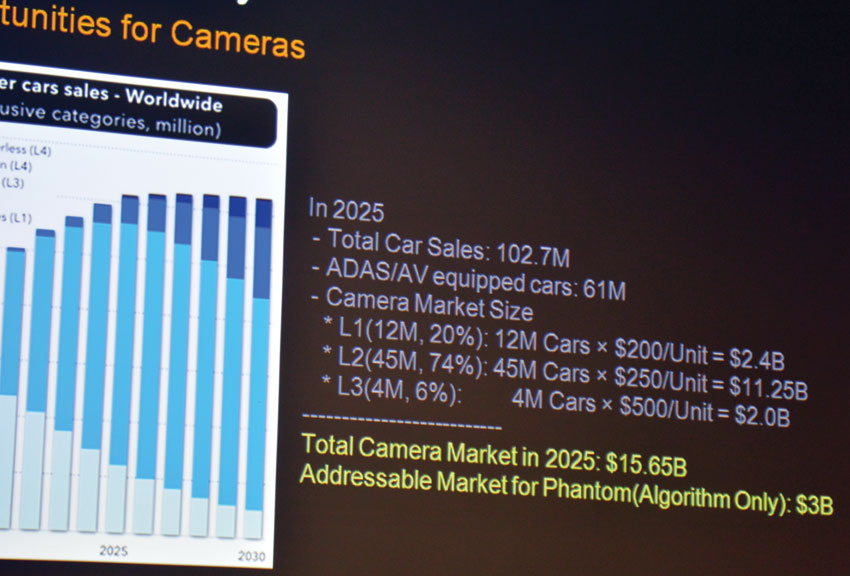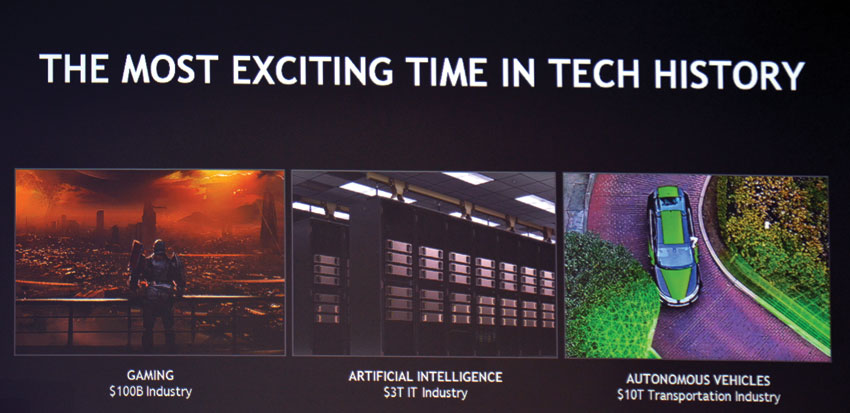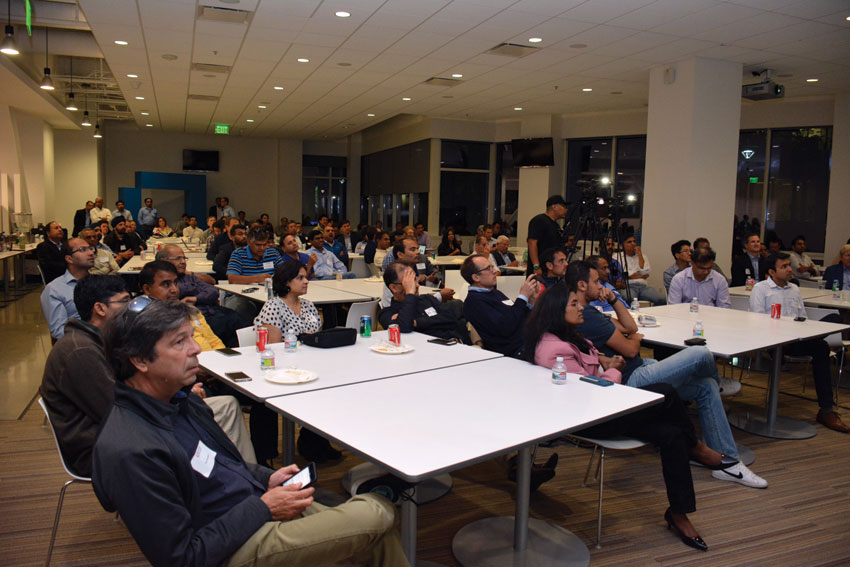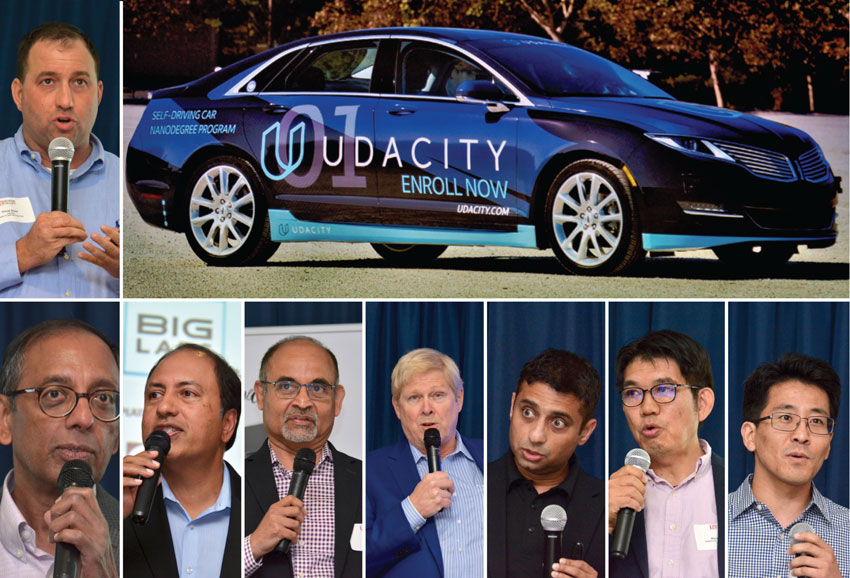Why Drive? When You Can Ride: Autonomous Vehicles are Coming, Soon
(Top row, l-r): David Silver, head of Self-driving Cars, Udacity; A Udacity testing vehicle; (Bottom row, l-r): TiE Silicon Valley executive director Jay Vishwanathan; TiE Silicon Valley president-elect B.J. Arun; Visteon Corp. vice president – AI, Vijay Nadkarni; Founder, CEO of Velodyne LiDAR, David Hall; Nvidia VP of hardware engineering, Ashish Karandikar; VP of Denso, Manji Suzuki; and CEO of Phantom AI, Hyunggi Cho at a panel on Future of Autonomous Vehicles, Oct. 9, in Sunnyvale, Calif. (All photos: Vansh A. Gupta/Siliconeer)
Autonomous vehicles are slowly becoming mainstream with the introduction of Tesla’s Auto-Pilot. However, of the 5 levels of autonomy technology, Tesla is only at level 2. Incoming the new decade, many tech companies like Nvidia, Denso, and Udacity look into level 5 autonomous vehicles where one can simply ride rather than drive. TiE Silicon Valley and Denso hosted an event on level 5 autonomous vehicles at the Micro Focus Office in Sunnyvale, Calif. Experts in this field explain the possibilities and an action plan to bringing level 5 autonomous vehicles to consumers, writes Siliconeer youth editor Vansh A. Gupta.
Autonomous vehicle is the new buzz in Silicon Valley as startups, as well as, tech giants are focusing their efforts onto fully autonomous vehicles. Autonomous vehicles are already a reality so to speak, with Tesla, and others like Apple, Uber and Waymo testing, we can see capable autonomous vehicles hit the market in 2020. However, the experts in this event talk more about behind-the-scenes action for fully autonomous cars.

The keynote started off with a welcome note from TiE Silicon Valley executive director Jay Vishwanathan, followed by a warm welcome by TiE Silicon Valley president-elect B.J. Arun.
Visteon Corp. vice president – AI, Vijay Nadkarni, was our moderator for the evening and introduced us to the topic of autonomous vehicles and where the development stands today.
Founder and CEO of Velodyne LiDAR, David Hall, talked about his journey and how LiDAR technology came to be. He talked about the shift from audio engineering to LiDAR which was tough for him and his team in the beginning. 3D LiDAR essentially allows real-time 360-Degree surround vision for the autonomous vehicle.

After Hall’s talk, Nvidia VP of Hardware Engineering, Ashish Karandikar, talked about Nvidia’s involvement in the autonomous vehicle. He explained that this is the most exciting time for the tech industry. To put things into perspective, he asserts that gaming is a $100 billion industry, AI is a $3 trillion industry, and autonomous vehicles will make the transportation industry a $10 trillion industry.
Founder and CEO of Applied Intuition, Qasar Younis, talked about the logic behind an autonomous vehicle and how it would make decisions, based on the situation it is given. Basically, implementing AI into autonomous vehicles.

Following Younis’ talk, Udacity head of Self-driving Cars, David Silver, talked about the feats of Udacity and its role in the development of autonomous vehicles. He elaborated more on training the AI for different situations. He claims that this is done through different simulations with the AI and had a neat graphic to go with it.
Finally, the VP of Denso, Manji Suzuki, and CEO of Phantom AI, Hyunggi Cho, elaborate on the feasibility and the probability of seeing a fully-functioning autonomous vehicle. They both concluded that autonomous vehicles are possible, and they make sense for the future, but all of this comes at a cost.

A decade ago, no one would believe that cars will be able to drive by themselves one day. Now no one would believe when one says that autonomous vehicles are ballistic and unrealistic.


